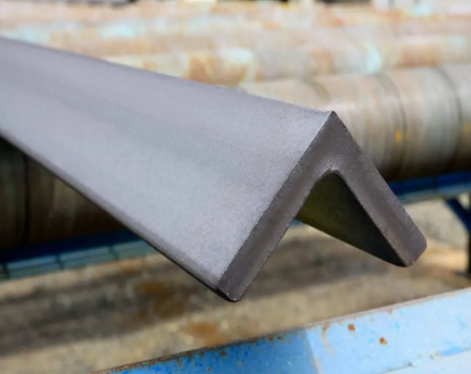Angle steel, commonly known as angle iron, is a long steel strip with two sides perpendicular to each other. It is mainly divided into two categories: ea steel and unequal angle steel. Among them, unequal angle steel can be divided into unequal equal thickness and unequal unequal thickness. What is the difference between equal angle section and unequal angle steel in terms of use?
Unequal angle bar is mainly used for various building structures and engineering structures. The scope of application of unequal angle steel and equal angle steel depends mainly on the specific situation. For more complex buildings or engineering projects, stainless steel unequal angle and mild steel angle may be used more, and for more regular engineering projects, equilateral angle steel will be used more.

un equal angle refers to a male angle steel bar with a right-angle L-shaped cross-section and unequal lengths on both sides. It is mainly used for large structural parts such as factories, bridges, and vehicles; medium-sized unequal angle steel is mainly used for building structures, trusses, iron frames, brackets, etc.; small unequal angle steel is mainly used for structural parts. Because the amount of unequal angle steel is less than that of single-sided angle steel, the relative position is slightly higher.
Equal angle bar is a long steel strip with two sides perpendicular to each other and equal width. It can be used to form various load-bearing components according to different structural needs, and can also be used as connectors between components. It is widely used in various building structures and engineering structures, such as h beams, bridges, transmission towers, lifting and transportation machinery, ships, industrial furnaces, reaction towers, container racks and warehouses. I hope that the content you understand will be helpful to you.
Unequal angle steel and equal angle are both used as connectors between components, and can be widely used in various municipal utilities, civil buildings and military industrial structures and engineering structures, but unequal angle steel is more used in various metal structures, bridges, machinery manufacturing and shipbuilding industries.
Unequal angle bar is mainly used for various building structures and engineering structures. The scope of application of unequal angle steel and equal angle steel depends mainly on the specific situation. For more complex buildings or engineering projects, stainless steel unequal angle and mild steel angle may be used more, and for more regular engineering projects, equilateral angle steel will be used more.

un equal angle refers to a male angle steel bar with a right-angle L-shaped cross-section and unequal lengths on both sides. It is mainly used for large structural parts such as factories, bridges, and vehicles; medium-sized unequal angle steel is mainly used for building structures, trusses, iron frames, brackets, etc.; small unequal angle steel is mainly used for structural parts. Because the amount of unequal angle steel is less than that of single-sided angle steel, the relative position is slightly higher.
Equal angle bar is a long steel strip with two sides perpendicular to each other and equal width. It can be used to form various load-bearing components according to different structural needs, and can also be used as connectors between components. It is widely used in various building structures and engineering structures, such as h beams, bridges, transmission towers, lifting and transportation machinery, ships, industrial furnaces, reaction towers, container racks and warehouses. I hope that the content you understand will be helpful to you.
Unequal angle steel and equal angle are both used as connectors between components, and can be widely used in various municipal utilities, civil buildings and military industrial structures and engineering structures, but unequal angle steel is more used in various metal structures, bridges, machinery manufacturing and shipbuilding industries.
| Feature | Equal Angle Steel | Unequal Angle Steel |
|---|---|---|
| Description | A long steel strip with two sides perpendicular to each other and equal width. | A long steel strip with a right-angle L-shaped cross-section and unequal lengths on both sides. |
| Usage | Used to form various load-bearing components and as connectors between components. | Mainly used for large structural parts such as factories, bridges, and vehicles. |
| Application Scope | Widely used in various building structures and engineering structures like H-beams, bridges, transmission towers, lifting and transportation machinery, ships, industrial furnaces, reaction towers, container racks, and warehouses. | Used in more complex buildings or engineering projects, and in various metal structures, bridges, machinery manufacturing, and shipbuilding industries. |
| Advantages | Can be used to form a variety of structures according to different needs. | Used in more complex and diverse applications due to its unique shape. |
| Relative Position | Generally more common and widely used. | Less common than single-sided angle steel, but used in specific situations where its unique shape is beneficial. |









